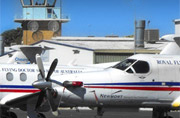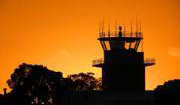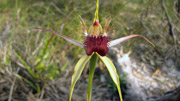Opened in 1963, Jandakot Airport is the major General Aviation airport in Western Australia, and is one of the busiest airfields and largest aviation training bases in Australia.

- Aircraft Parking
- Airside Access
- Airside Driving and Vehicles
- Conditions of Access and Use
- Fees and Charges
- Hangars for Lease or Sale
- Wildlife Hazard Management
- Drone Activities
- Crane Applications / Airspace Protection
- Reporting Incidents and Hazards
- Airside Tenant Works
Community

Development

Environment

AIRSPACE PROTECTION
Information is provided on this webpage for:
- FO215 Crane Use / Controlled Activity Application [PDF 100KB]
- Controlled Activities (activities that may result in an instrusion of protected airspace, such as buildings and cranes)
- External Lighting
- Balloons
- Unmanned Aircraft (drones and rockets)
CONTROLLED ACTIVITIES
The Department of Infrastructure and Regional Development protects the airspace around leased Federal airports under the Airports Act 1996 and the Airports (Protection of Airspace) Regulations 1996. The protection of airspace is essential in order to provide a safe and predictable environment for the arrival and departure of aircraft using an airport.
National and international standards have been adopted which define two sets of invisible surfaces above the ground. These surfaces are:
- Obstacle Limitation Surface (OLS): a defined area of airspace designed to provide protection for visual flying (VFR) operations, where the pilot is flying by sight. All existing and potential obstacles must be assessed to ensure that any impact on aircraft operations is identified.
- Procedures for Air Navigation Services – Aircraft Operations (PANS-OPS): a defined area of airspace designed to provide protection for instrument flying (IFR), where the pilot is reliant on instrument navigation. PANS-OPS surfaces may also include protection of the airspace around navigation aids that are required for instrument flying activity.
Any activities that will result in an intrusion of protected airspace are referred to as “Controlled Activities” that must be approved by the relevant airport-operator company. Controlled Activities include:
- permanent structures, such as buildings, intruding into the protection airspace;
- temporary structures, such as cranes, intruding into the protected airspace; and
- any activities causing intrusions into the protected airspace through glare from artificial light or reflected sunlight, air turbulence from stacks or vents, smoke, dust, steam of other gasses or particulate matter.
Jandakot Airport Holdings will complete an initial assessment of a Controlled Activity Application to determine whether the activity will cause an intrusion into the OLS or PANS-OPS surface and the extent of any intrusion. If there is an intrusion, Jandakot Airport is required to seek further assessment from Airservices Australia and the Civil Aviation Safety Authority (CASA). The comments from CASA and Airservices will then be provided to the Department of Infrastructure to approve/refuse the application. Controlled activities that result in an OLS infringement and are less than 3 months duration may be approved by Jandakot Airport following assessment by Airservices and CASA.
Further information:
- FO215 Crane Use / Controlled Activity Application [PDF 100KB]
- Jandakot Airport Obstacle Limitation Surface (OLS) diagram [PDF 1.1MB]
- Jandakot Airport PANS-OPS diagram [PDF 232KB]
- Protection of Airspace
- Airspace Protection at Leased Federal Airports (including approval timeframes)
- Airservices Australia assessment requirements
- CASA Advisory Circular AC139-08: Reporting of Tall Structures [PDF 392KB]
- CASA Advisory Circular AC139-05: Plume Rise Assessments [PDF 108KB]
Operating Cranes in an Airport’s Protected Airspace
Crane operations in the vicinity of an airport have the potential to create air safety hazards and to seriously limit the airport’s operations. For this reason, they are required by law to be assessed and approved under the Commonwealth’s Airports (Protection of Airspace) Regulations.
It is an offence under Section 183 of the Airports Act 1996 to carry out, without approval, crane operations which intrude into an airport’s protected airspace. This offence is punishable by a fine of $27,500. It is an offence under Section 185 of the Aiports Act 1996 to contravene any conditions imposed on an approval. It is also an offence under Section 186 of the Act not to give information to the airport operator that is relevant to a proposed controlled activity.
Crane operators must provide a completed Controlled Activity Application to Jandakot Airport at least 28 days prior to the proposed crane activity.
Further information:
EXTERNAL LIGHTING RESTRICTIONS
The Civil Aviation Safety Authority (CASA) has the authority, under the Civil Aviation Regulations 1988, to control ground lights where they have the potential to cause confusion or dIstraction (from glare) to pilots in the air. To assist lighting designers and installation contractors, CASA has established guidelines on the location and permitted intensities of ground lights within a 6km radius of airports. The diagram below depicts the lighting intensity guidelines with respect to Jandakot Airport’s two lit runways (06L/24R and 12/30).
- Jandakot Airport Restricted Light Zones [PDF 1.01MB]
BALLOONS
It is a requirement under Civil Aviation Safety Regulations 1998 (CASR) Regulation 101.155 that the Civil Aviation Safety Authority (CASA) approves the release of balloons into airspace surrounding an airport.
Small balloons (<50 grams of payload) released in large bunches can pose a safety hazard to aircraft by distracting pilots or getting caught in engines and propellers.
As per CASR 101.155-1, the requirements for the release of small balloons are as follows:
| Number of balloons to be released at one time | Distance from place of release to nearest aerodrome | |||
| Less than 3 nautical miles (5.5km) | 3-6 nautical miles (5.5-11km) | 6-12 nautical miles (11-22km) | Over 12 nautical miles (22km) | |
| 101 – 1,000 | 1. CASA approval | 2. NOTAM | 3. ATC advice | 3. ATC advice |
| 1,001 – 10,000 | 1. CASA approval | 1. CASA approval | 2. NOTAM | 3. ATC advice |
| Over 10,000 | 1. CASA approval | 1. CASA approval | 1. CASA approval | 2. NOTAM |
- CASA approval = CASA must assess and approve the balloon release.
- NOTAM = CASA approval is not required, but the information must still be provided to CASA so that a Notice to Airmen (NOTAM) can be issued to aircraft operators.
- ATC Advice = CASA approval is not required. However, as a courtesy to Air Traffic Control, it is requested that information about the balloon release is provided.
For the release of more than 100 balloons, please provide details of time, location and volume of the proposed balloon release to Jandakot Airport through the Contact Us form. If CASA approval or notification is required, information about the balloon release must be received by JAH at least 14 working days prior to the event.
DRONE ACTIVITIES IN THE VICINTY OF JANDAKOT AIRPORT
Unmanned Aircraft, such as drones and rockets, can pose a serious hazard to aircraft operators.
Unmanned aircraft may not be operated within 3 nautical miles (5.5 km) of Jandakot Airport without approval from the Civil Aviation Safety Authority (CASA) in consultation with Airservices Australia. Information on the process for approval is available at https://www.casa.gov.au/aircraft/landing-page/flying-drones-australia
In addition, it is illegal to fly an unmanned aircraft for commercial hire or reward (including advertising and uploading videos to YouTube) unless the operator has an unmanned operator’s certificate covering that type of operation – see https://www.casa.gov.au/aircraft/standard-page/operating-unmanned-aircraft-safely for further information.
source : https://www.jandakotairport.com.au/development/airspace-protection.html